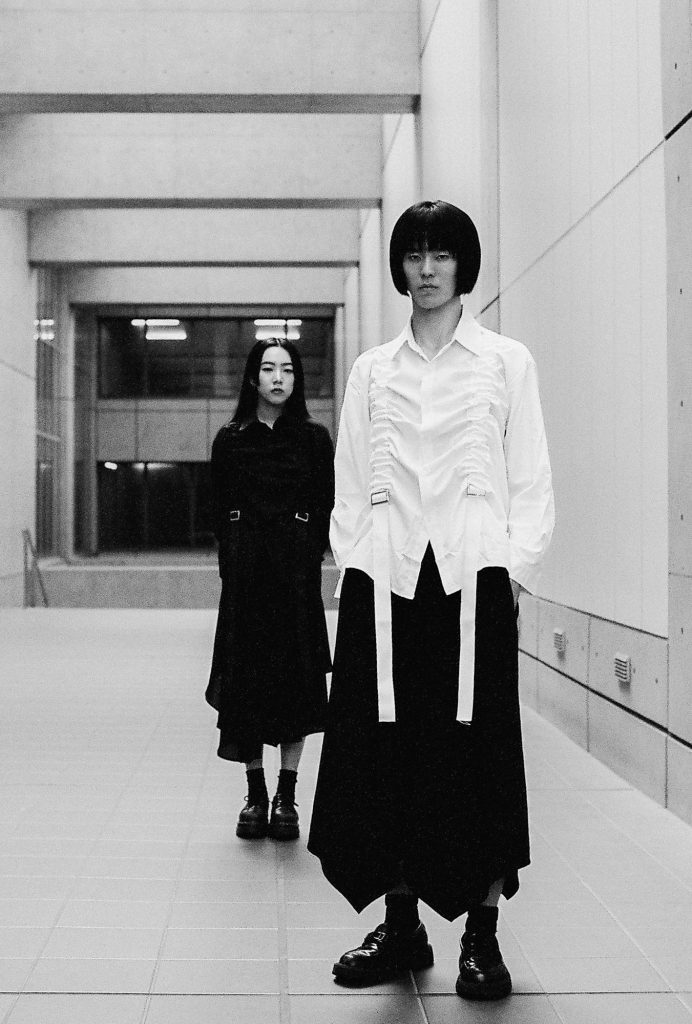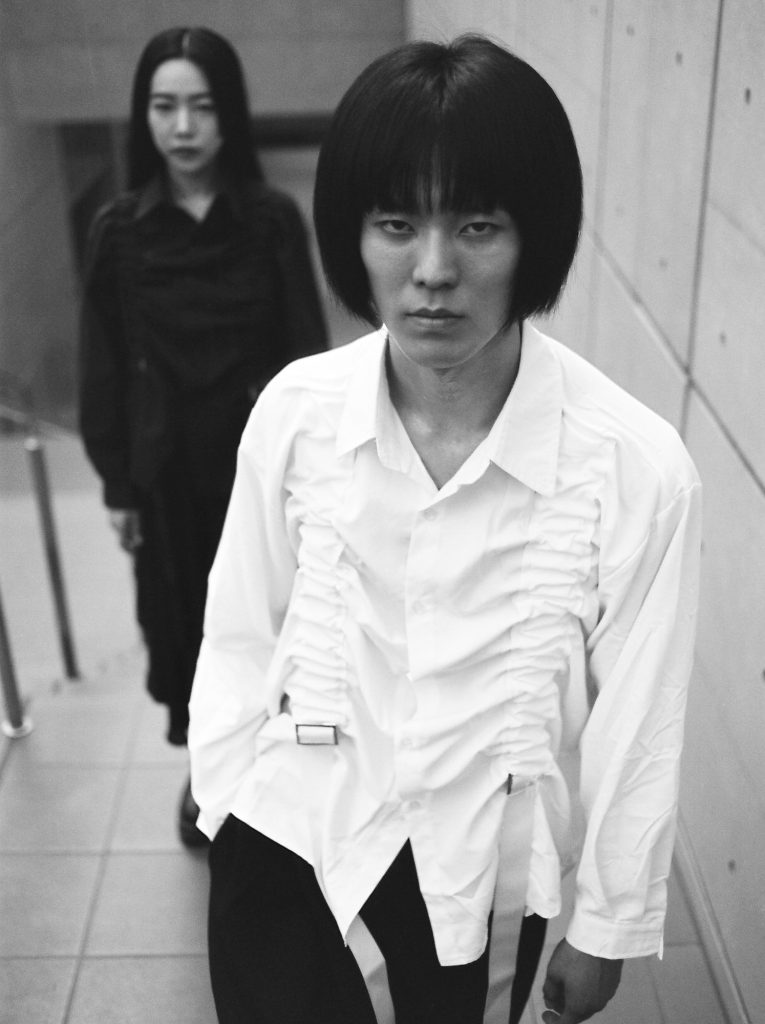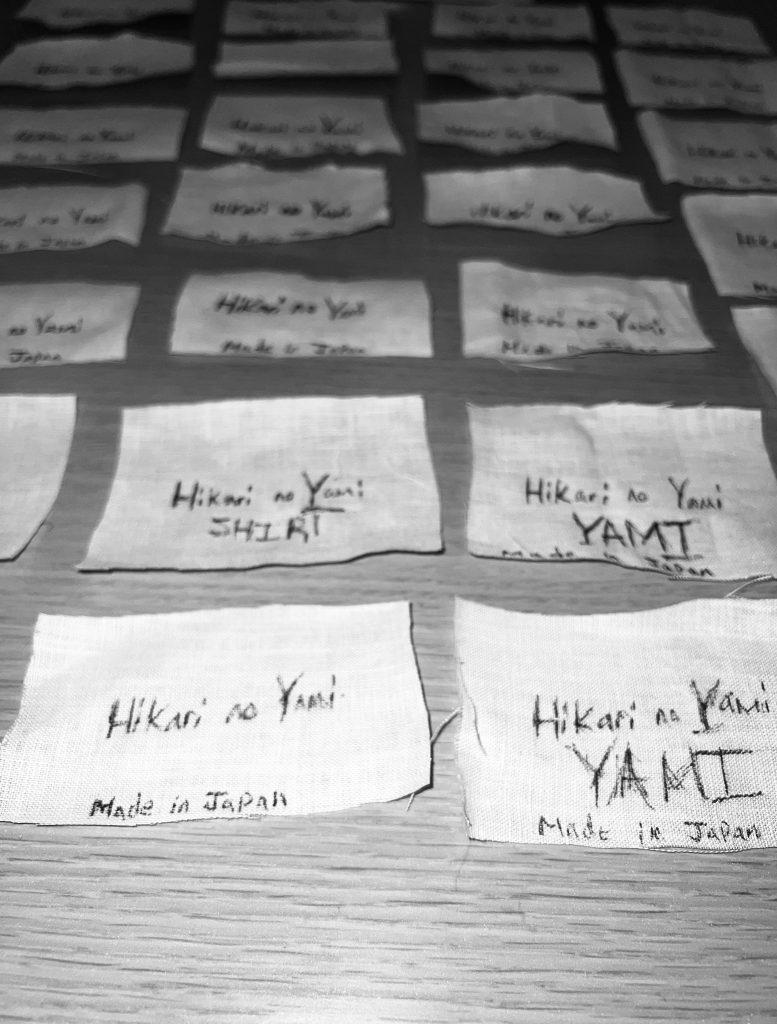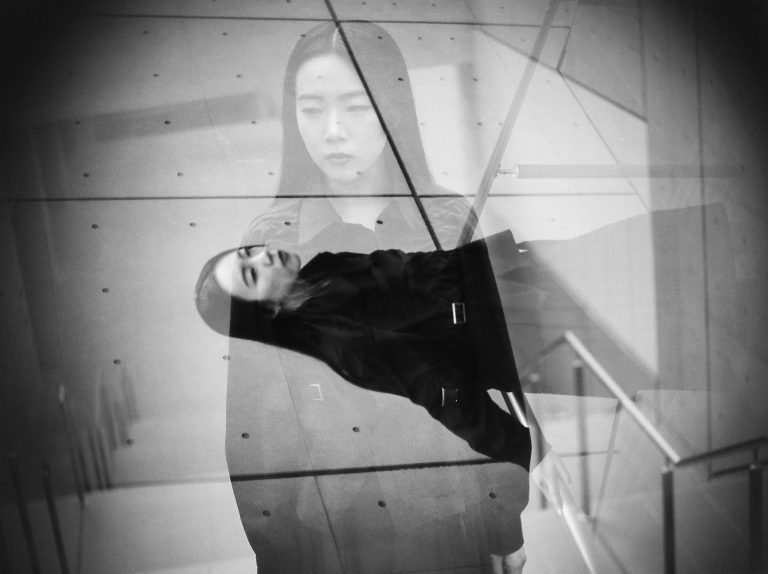


Jakarie Whitaker, a rising star in the fashion world and a recipient of the prestigious Fashion Scholarship Fund’s Virgil Abloh Post-Modern Scholarship, is making waves with his forward-thinking designs. Rooted in the exploration of post-human existence, his brand Hikari no Yami blends Japanese traditions with dystopian, deconstructed aesthetics, pushing the boundaries of contemporary fashion.
hube: Your work often explores the theme of post-human existence. How did this concept become central to your design philosophy, and what does it represent in the context of your collections?
Jakarie Whitaker: With Hikari no Yami, it was always about something beyond human existence. The post-human experience, I believe, is one of the greatest forms of philosophy personified. Hikari no Yami is my medium for expressing thoughts on philosophy and the metaphysical questions of everyday life. My design philosophy is rooted in appreciating chaos, darkness, and deconstruction so that one can truly value order, light, and creation.
h: The Hikari no Yami collection uses a monochrome palette and deconstructed forms. How do these design choices help convey the collection’s themes of dystopia and technological dominance?
JW: Using black and white has always been an essential way for me to express Hikari no Yami’s main themes of yin and yang, light and darkness. A monochromatic colour palette allows me to highlight these dualistic elements easily, helping the observer distinguish between the two opposing philosophies that the garment is trying to convey.
Hikari no Yami is all about presenting these ideas through destroyed, deconstructed designs. When you view the garments, it’s hard to tell the age of the pieces, and that’s something I like. With dystopian fashion, you gain a sense of freedom from expectations and comfort. The themes always touch on society’s pressures, especially the burden of societal expectations.
h: Your designs often integrate elements of traditional Japanese attire in a futuristic context. How do you balance respect for tradition with the desire to innovate and push boundaries?
JW: I love the idea of blending worlds, which is why I named the brand Hikari no Yami. I place a lot of emphasis on respecting Japanese design philosophy and techniques. I often start with basic flat patterns, like those used in kimonos or hakama, and then I integrate the brand’s philosophy. After that, I add my cultural heritage as an African American, merging these worlds to create something completely new. My concept of innovation is simple: keep moving forward.
h: Hikari no Yami has been described as a brand built around philosophy. How do you incorporate philosophical concepts into your design process, and how do they influence the final product?
JW: For every Hikari no Yami collection, I begin with two contrasting philosophical themes – whether it’s Nihilism vs. Existentialism, Absurdism vs. Humanism, and so on. I want to give physical form to these philosophical ideas. For example, when a garment is deconstructed, torn, or tattered, it can represent the hardships we face in life. I like to think that when people view my work, they can choose freely between the philosophical standpoints I’ve embedded in the designs.

